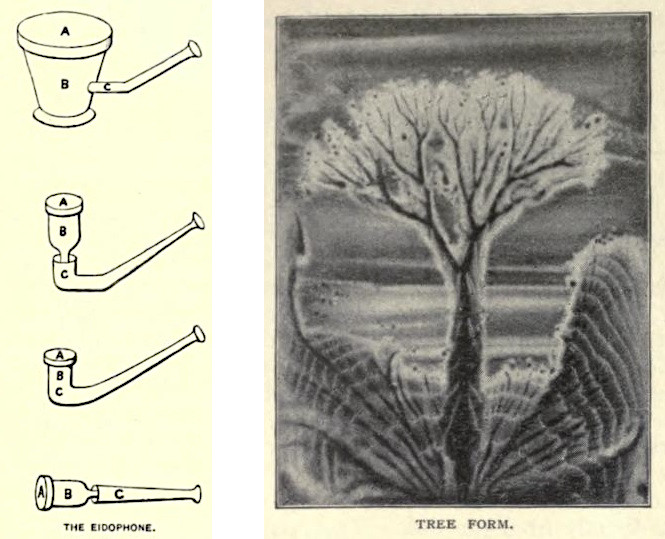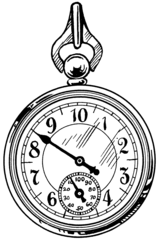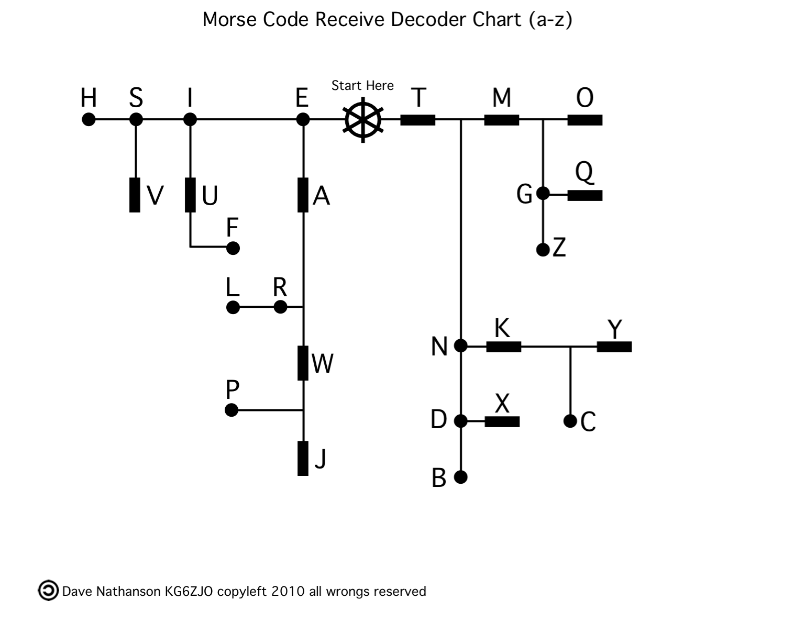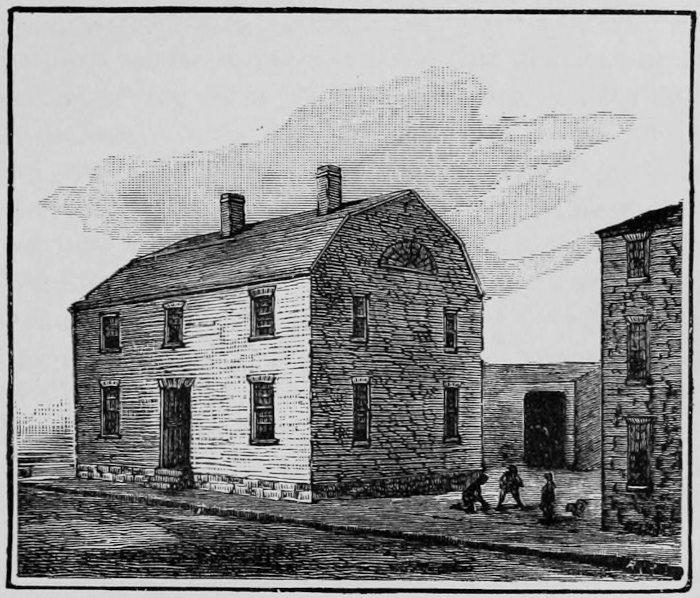
In 1885, seeking a way to depict vocal sounds visually, Welsh singer Megan Watts Hughes invented the eidophone, a chamber capped with an elastic membrane that would resonate when the singer sang into a tube. When she spread the disk with a thin layer of sand or glycerine, standing waves would register as visible patterns resembling forget-me-nots, daisies, marigolds, chrysanthemums, and sunflowers.
“Stepping out of doors,” she wrote, “[I] have seen their parallels living in the flowers, ferns, and trees around me; and … the hope has come to me that these humble experiments may afford some suggestions in regard to nature’s production of her own beautiful forms.”
The field of study she helped to pioneer is now known as cymatics — see Chladni Figures.






